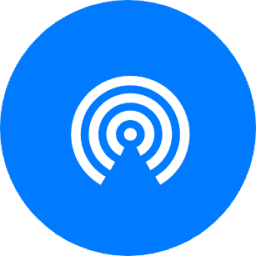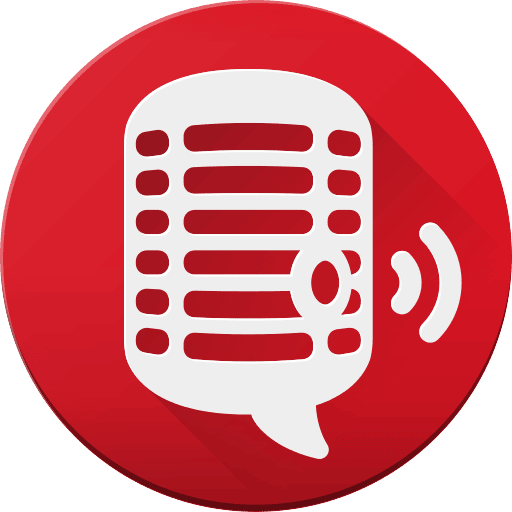
August 18, 2020
Brian Solis, Global Innovation Evangelist
Named “one of the most creative and brilliant business minds of our time” by Forbes, Salesforce’s Global Innovation Evangelist, best-selling author, keynoter and futurist Brian Solis joined me for a fun episode on The Reboot Chronicles.
Over the years, Brian has immersed himself in mastering business market disruption, society and the future in a digital anthropologist role. Now working at the $17 billion dollar giant Salesforce, analyzing trends and technologies to gain new perspectives, he has no shortage of insights to share in and around digital transformation, innovation, cognitive experiences and human behavior.
Who Moved My Playbook?
The 2020 pandemic will have a lasting impact on all of our businesses, some permanently! It seems that most everyone is struggling to figure out their next steps without a Playbook. Brian labels it the Novel Economy, with a new normal that, in my opinion, is too new, too foreign and way too unusual for society. And, since we don’t have a current Playbook, many of us are searching for the best way to re-establish forward momentum in our lives and organizations, including what specific steps to take and how to re-invent most everything.
Our challenge and the gift before us is that we’re looking at a blank canvas for what lies ahead,” Solis
Here is how Brian talks about the three phases of our Novel Economy, maybe use it to reboot your Playbook:
Phase 1: Survive – Reaction to Crisis
In 2020, organizations established COVID taskforces and launched war rooms to assess what’s not working, what needs to get done, and where to reset priorities. Speed is now your relevant currency. Here, stakeholders can only talk about what can happen in days or weeks at most.
Investments in tech and resources are focused on triage and mitigation. There’s large scale scrambling to fix what’s broken, develop apps, workflows, and models to address unforeseen issues and opportunities. Automation is accelerated, especially in service with chatbots or conversational AI, to manage the incredible influx of inbound and outbound engagement.
Phase 2: Alive – Build, Secure, and Operationalize for Transition State
In phase 2, leadership accepts that disruption is the new normal and is the foundation on which to build upon. Beyond technology, leaders work to help people cope with finding comfort in evolving discomfort zones. If it wasn’t obvious before, becoming a digital-first business is the way forward. Here, business continuity is reflective of the new normal and becomes operationalized.
We shift from shock-based response to short-term strategy and action. What separates the states is intent, purpose, and scope. Organizations will prioritize support for the most immediate investments to fix the broader issues coming to light in phase one (cracks or outright gaps in digital transformation plans and initiatives). At the same time, stakeholders are working on securing systems, new work environments, and infrastructure to support dynamic operational environments.
Before organizations can build an agile, disruption-proof operational model, stakeholders have to plan for short-term business continuity (spanning the next one-to-two years). A transition roadmap is developed that shifts from shock mode to shorter-term priorities and longer-term needs.
Leadership: Being forced to take sudden critical action is rarely positive or productive. Disruption in one way shape or form is a permanent threat. If management is not leading, then employees and partners lose confidence. Leaders must focus resources on not only mitigation but also articulate a path toward innovation. Trust is paramount and employees, customers, and partners must align around a renewed organizational vision and mission.
Digitization: Digital transformation becomes intentional and focused. Bureaucracy crumbles. The cross-functional war room shifts from mitigation to enterprise-wide digitization, becoming a cross-functional steering committee.
Cloud: Cloud computing is taking the spotlight as remote working, e-commerce/mobile commerce, and virtual meetings and events skyrocket, stress-testing cloud infrastructure in real-time. Becoming a digital-first business requires organizations to migrate key systems to hyper-scalable cloud platforms.
Digital-First CX and EX: The more time customers and employees spend working and shopping from home, the greater the shifts in decision-making, behaviors, and values. Previous experience standards and data are no longer in alignment with new activities as they evolve into routines. Additionally, we’re shifting from studying work/life balance to work/life blending. In Phase 2 CX, digital-first touch-points in marketing, sales, and service are supported by native platforms, processes, and experiences. Digital EX also becomes a primary focus to support native digital and remote workplace systems, processes, and engagement. Data-driven empathy is essential for personalization across customer and employee journeys.
Security: Cyber security is heightened as critical functions of a digital-first business introduce vulnerabilities. Privacy, phishing, DDoS (distributed denial of service) attacks, mal-spam, ransomware, etc. requires increased security efforts.
Supply Chain and Logistics: Now, companies must rethink and transform the global supply chain and logistics models. Exposed vulnerabilities are the result of decades-long focus on supply chain scale and efficiencies to minimize costs, much like service centers.
Data-Driven: Data is recognized as an essential asset rather than a byproduct of disparate business processes. Data-driven cultures take shape to zero-in on customer truth. As a result, data silos are eliminated, data is consolidated, access and data literacy are democratized, analytics and insights become a service and fuel organizational stabilization and transformation. Additionally, data becomes visualized, sourced from disparate sources, with AI adding immediate, approachable insights that guide analytics, decision making, and incremental disruption-proofing.
AI-Driven: Automation programs continue to accelerate across the enterprise, most notably in services, like www.Revieve.com. AI-powered self-service knowledge bases, chatbots, apps, real-time, predictive analytics and recommendation engines will help free up critical human capital to focus on transformation and innovation initiatives.
Organization and Workforce Modernization: Employee experience and engagement require an entirely human-centered and empathetic approach in a Novel Economy, like all P2P initiatives. Policies will need updating for new remote workforces and social distance-compliant office workplaces, and travel protocol. Employees will also require training on new policies and also new workflows and systems.
Mental and Physical Well-Being: Disruption affects people at every level, not just during initial shock, but also over time as distancing, unfamiliar territory and isolation sink in. The event itself already has burned into the subconscious as a somatic marker. Add to that new stresses of everyday life and work at home, fear of disease, heightened uncertainty, and also economic woes, employees will need coaching to guide and therapy to help adjust, cope, and ultimately flourish in this next normal.
Phase 3: Thrive – Next Business Continuity, Disruption Proofing, and Innovating
In this phase, society at large is adjusting to life with the still active presence of COVID-19 (12-36 months post wave 1 disruption). New tests and treatments are abound. We are either on the cusp of or post vaccine. Next normal is… close to or in the process of normalizing.
In Phase 3, organizations reacting to and building infrastructure for the Novel Economy is the new status quo. Emphasis from here on out is 1) expanding digital business capacity and expertise, 2) fueling the organization’s innovation engine for growth (operational, product, and services) 3) expanding the role of AI and automation across the enterprise to improve capacity, and 4) resilience for long-term disruption-proofing.
Culture of Innovation: Cultures of innovation are foundational to thriving in a Novel Economy or any economy. Companies with a high purpose culture are more innovative and create trust in leadership and alignment across the workforce. Innovation is not a function of check-boxes to be more innovative. Innovation is the result of a clearly articulated vision and belief system (a future motivating state), supported by the socialized norms and values that fortify new behaviors.
Customer and Employee Truth: Working toward understanding customer 360 truth (and employee truth) leads to digital-first innovation that humanizes customer and employee journeys, at every touch point, across functions. Data becomes a great centralizer to allow for next normal customer behaviors, preferences and intent to become visible across the customer journey and life-cycle.
Real-time and Predictive Analytics: Previous datasets don’t necessarily apply to new behaviors. Studying new behaviors in real-time as they unfold in the Novel Economy helps organizations grasp new trends as they evolve to deliver relevant engagement, next best actions, and desired outcomes in real-time. With AI, these trends become predictable to help innovative companies predict needs and trends to develop and deliver personalized experiences ahead of time.
Cognitive Automation: Automation extends (and matures) from marketing, sales and service, to now include experience design, product development, supply chain and logistics, adding a new dimension to digital transformation. Disparate CRM and ERP systems and data are cleaned and consolidated. New systems and apps introduce cognitive capabilities across middle and back office systems including, human resources, pricing, inventory, delivery, manufacturing, and financial management.
Re-skill and up-skill: Even before disruption, a massive skills gap was only continuing to grow. As innovation initiatives and automation becomes pervasive and new systems are deployed, everything requires training, reskilling, and also upskilling. With innovation and automation comes the need for new (and creative) thinking, processes, and capabilities. We shift from people doing the work to systems doing the work as directed by people. With education disrupted, we can expect modern training and skilling to become attached to individuals digitally, think blockchain-powered badges or living certificates/degrees.
Dynamic Experience Design: The “Customer’s Experience” is paramount as they’re in control of their experiences and those experiences are constantly in flux as virtual and blended times, trends, tastes dictate. Human-Centered Design (HCD) and Cognitive Experience Design or AIX assesses collective and individual preferences and desired outcomes to deliver intuitive, productive, and dynamic experiences in real-time. Whether it’s voice, contactless interfaces and transactions, AR/VR, gesture-based, mobile, modern physical or click-based, the experience is dynamic and personal.
Digital Twins: Highly complex virtual models of real-world counterparts will help organizations accelerate modeling in a variety of mission-critical scenarios. Progressive organizations are already using IoT sensors embedded in factory machines to feed operational data into AI applications to simulate supply chain performance. With social distancing measures in place for the near future, digital twins will help organizations and partners in applications such as construction, healthcare, engineering, logistics, public policy, environment, among many others.
Blockchain and Distributed Ledgers: Supply chains will naturally benefit by creating a single, transparent verified receipt or truth at every step of distribution. Distributed ledgers will also be crucial to vertical innovation including financial, healthcare, manufacturing, shipping, insurance, real estate, energy, taxes, elections (hopefully sooner than later), education, and the list goes on. Innovative pilots are also underway in a variety of disruption-inspired applications. For example, technologists are building a blockchain-based “Immunity Passport” on the self-sovereign identity (SSI) to stop the spread of COVID-19.
Robotics: Smart robots were already starting to appear in niche manufacturing, inventory, logistics, retail, security and healthcare applications. In a world of social distancing, expect to see the deployment of robots accelerate in existing applications as well as futuristic scenarios including autonomous service and delivery, cleaning (hazards, disinfection), drone delivery and surveillance, testing, and even robot pals to address loneliness.
Resilience: Resilience, the ability to recover from or adjust to change, is now a characteristic of companies who will thrive in a Novel Economy. It took a global disruption to jump-start the world’s innovation engine. Disruption is not a one-time event. Whether it’s a competitor, a startup, or force majeure, disruption is expected…advanced organizations are planning for it. Resilience is a key pillar in the culture of innovation, it becomes part of leadership vision, culture, and organizational DNA.
“Deepak Chopra refers to significant life-changing events as a ‘fertile void of uncertainty.’ In Stoic Philosophy, they believe that we don’t control and cannot rely on external events. But we can control our mind, how we think and choose our responses, which then guides our resulting behaviors. Our challenge and the gift before us is that we’re looking at a blank canvas for what lies ahead,” Solis said.











